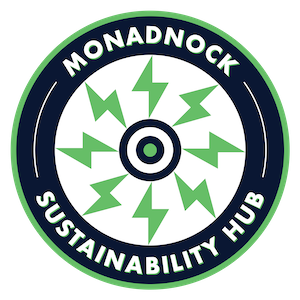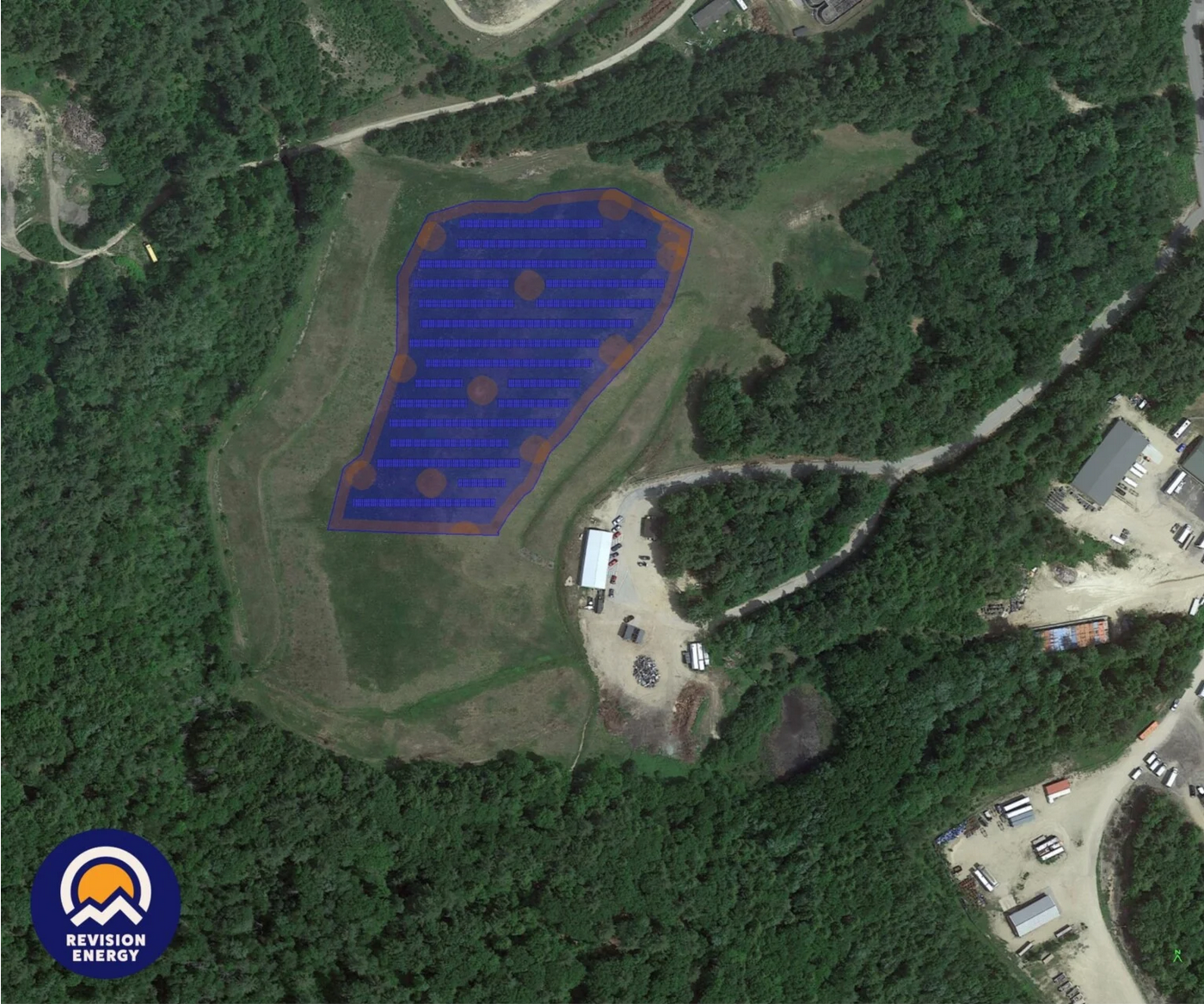By Peter Hansel. Originally Published in The Monadnock Shopper News, Green Monadnock column, April 2024.
So what is a Community Solar Garden, anyway? When we think of a garden, we think of solar energy from the sun shining onto green cells in plants which use photosynthesis to convert CO2 in the air to carbon and oxygen. The oxygen is rejected back to the air that we breathe. The carbon left behind combines with water and other nutrients from the soil to create the carbohydrates in the plant material that provides the food that we eat. Without these photons from the sun, life as we know it would not exist. A similar process takes place in a community solar garden except the plant is replaced by a solar array. When the sun shines on the silicon cells in the array, in a process called photovoltaics, those photons free up electrons that flow into the electrical grid. The electricity generated then goes to power transportation, heating and cooling, manufacturing and all the other uses that make up our daily lives. In other words, rays from the sun provide not only the food we eat and the air we breathe but all the other necessities we need to survive and thrive.
That is all well and good but where does the community fit in? With recent changes in NH regulations, a solar array built on one property can now serve multiple users on properties near or far. Think of the electric grid as a large reservoir. People drawing water out of that reservoir can be anywhere that the water district serves. A community solar garden works the same way. A solar array is being built in Jaffrey on top of an old landfill that will supply 1,000 kW AC of power to the Eversource electrical grid. That is about 1.75 MWh/yr. If you are a customer within that grid, you may be eligible to receive a share of that power generated and receive all the benefits and tax incentives as if you had an array on your own roof. You can be a private resident, a business, a church or non-profit. Jaffrey customers are being given the first dibs on shares to the array but there should be excess that can be offered on a first-come basis to others in the region. This is the first community solar garden in our region and we hope there will be many more.
Here’s how it works: let’s say your home or small business needs 10 kW of power to supply it needs. You can sign up with the Community Solar Garden in Jaffrey (subject to availability) for a refundable deposit of $1,000. If you are accepted, there is a share price of $3.55/watt or $35,500 for a 10kW share plus a one-time fee of $2,500. There is also an annual operating and maintenance cost of $25/kW. When you apply the IRA federal tax credit of 30% (or the 30-50% direct pay for non-profits), that initial investment for the 10 kW share drops to under $25,000.
We all know that the sun doesn’t shine brightly every day. We also know that there are some days when we don’t use much energy (away on vacation?). So how does a community solar garden account for these differences? If the solar array generates more power than its users need, that excess power goes back into the grid and is sold to the utility company (Eversource in this case). Eversource credits that sale against the purchases of power by each of the users on their electric bill each month. Conversely, if the solar array produces less energy than its users need, the deficit is made up by the utility from other suppliers to the grid. On your invoice, you will see ‘Purchases’ and ‘Sales’ so you can see how well at array is performing each month.
The solar array will also generate Renewable Energy Credits (RECs) which are sold to companies (like energy suppliers) who want to increase their renewable energy portfolio. The money from the sale of these RECs goes back to the owners of the solar array.
With Community Solar Gardens, you can let the sun work for you even if you don’t have a suitable site for your own array.
Peter Hansel has served as a Keene City Councilor, Chairman of the Keene Conservation Commission, Chairman the Board of Directors of the Harris Center for Conservation Education and President of the Friends of Open Space in Keene. He also served on the board of Antioch University New England. Peter is a member and past president of the Keene Rotary Club. He also currently serves as Chair of Keene’s Energy and Climate Committee and the Hannah Grimes Center for Entrepreneurship and is on the board of the Greater Keene and Peterborough Chamber.

